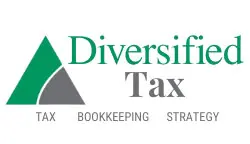Is a Mill a Property Tax?
Is a Mill a Property Tax?
When reviewing your taxes or homeowner’s paperwork, you may come across the word mill, or millage, and wonder what it means. Is mill a property tax? Does mill mean the same thing as millage? Learn more about mill rates, or millage rates, and how they are assessed in property taxes.
What is a mill rate?
A mill rate is also known as a millage rate. This rate is a tax rate, with 1 mill equal to 1/1000th of a dollar in the US. When you’re talking about mill rate in relation to your property tax, it’s levied as $1 per $1,000 of your property’s assessed taxable value. A millage rate may be expressed as a percentage – so you may see a symbol %o, which means the mill part per thousand as a percentage. For example, if you saw 5%o, that would mean 5 dollars per thousand, or 0.5% tax.
Who determines the mill rate?
While the term millage comes from the Latin word millesimum, which refers to thousandth, the municipality that you live in determines the mill rate levied on your property. There are other government organizations that have a say in your mill rate as well – from the township or city that you live in, to various emergency services, to the county and even the school board of your school district.
Mill rates are based on property value, as property tax is an ad valorem tax. Values change over time and may be impacted by the real estate market, school district, and other factors. The mill rate itself is determined and set by the government and may change when general neighborhood property values increase or decrease. Your local government assessor is the one who assesses your property value, on a schedule that is predetermined by your county, township, city, or municipality – generally from one to five years.
How can you find your mill rate?
The millage rate for your property is listed on your deed. You may also obtain the mill rate by contacting your local tax office.
How to calculate property tax
Your property tax may be calculated by taking the assessed, taxable property value multiplied by the millage rate. Then you divide that sum by 1,000. For example, if your assessed taxable property value is $200,000 and your mill rate is 5, you’d first multiply $200,000 by 5 to arrive at 1,000,000. Then, you’d divide 1,000,000 by 1,000, which results in 1,000 – for a property tax owed of $1,000. If your mill rate is 5, for every $1,000 of assessed value in your home, you’d owe $5. You can utilize this formula to calculate your property tax if you know your mill rate:
Property tax due on property = (mill rate x assessed taxable property value) / 1,000
Your mill rate is your nominal property tax rate and may be levied at both a state and local level. Not all states levy property taxes, however, and some states use assessment ratios to determine an effective property tax rate which is a percentage of the market value taken in taxes. There are additional exceptions as well, where some states have exemptions for senior citizens, veterans, and other populations.
What states have higher or lower property taxes?
Property tax varies widely across the US, and even within a state, there can be a dramatic difference between counties and cities. Generally, New Jersey tends to have a higher property tax rate with an average of 2.13% while Hawaii comparatively is much lower, at a 0.31% rate. To see how your own state or locality compares, visit your state or country website to view current property tax rates.




